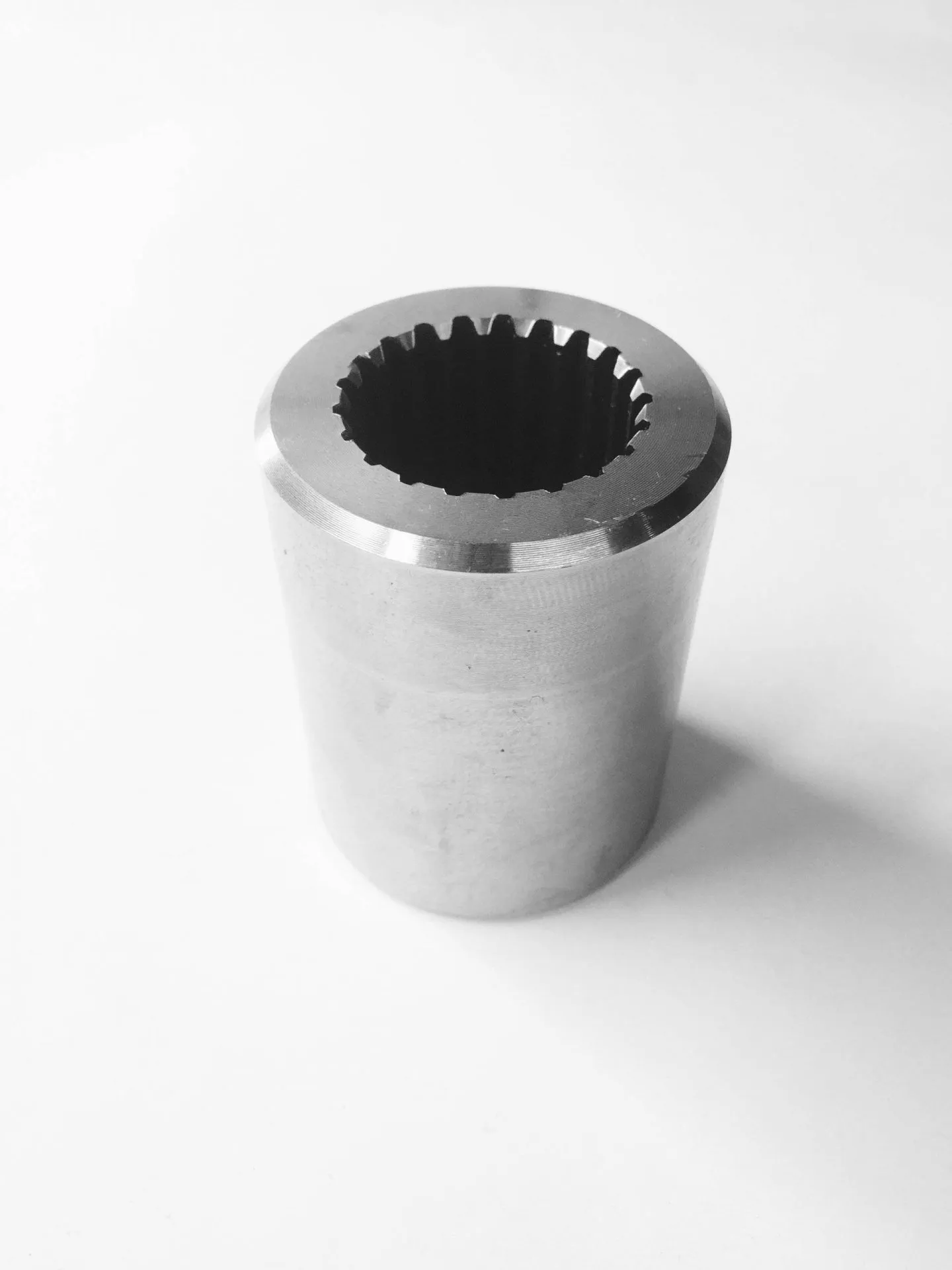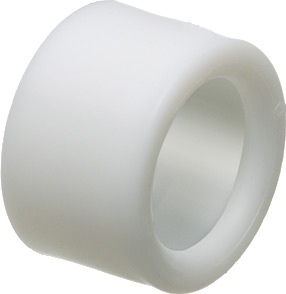
Are there specific guidelines for recycling or disposing of plastic bushings at the end of their life cycle?
When it comes to recycling or disposing of plastic bushings at the end of their life cycle, it is important to follow specific guidelines to promote environmental sustainability. Here’s a detailed explanation:
1. Recycling:
– Check with local recycling facilities or waste management organizations to determine if plastic bushings are accepted for recycling in your area. Recycling options may vary depending on the type of plastic material used in the bushings.
– If recycling is available, separate the plastic bushings from other components or materials before recycling. Remove any metal or non-recyclable parts attached to the bushings, if applicable.
– Clean the plastic bushings to remove any contaminants or residues that could affect the recycling process. Follow any specific cleaning instructions provided by the recycling facility or refer to general plastic cleaning guidelines.
– Consider contacting the manufacturer or supplier of the plastic bushings for guidance on recycling options. They may have information on specific recycling programs or initiatives available for their products.
2. Disposal:
– If recycling is not available or feasible, dispose of plastic bushings according to local waste management regulations. Check with local authorities or waste disposal facilities for guidelines on disposing of plastic components.
– In many cases, plastic bushings can be disposed of as regular non-recyclable waste. However, it’s essential to follow any specific instructions provided by local regulations or waste management authorities.
– If the plastic bushings contain any hazardous or toxic substances, such as heavy metals or chemicals, follow proper disposal procedures to prevent environmental contamination. Contact local hazardous waste facilities for guidance on disposing of such materials safely.
3. Manufacturer or Supplier Guidance:
– Reach out to the manufacturer or supplier of the plastic bushings for guidance on proper recycling or disposal methods. They may have specific recommendations or resources available to support environmentally responsible end-of-life management of their products.
– Manufacturers or suppliers who prioritize sustainability may have implemented take-back programs or recycling initiatives for their plastic bushings. Inquire about any available programs and follow their instructions for returning or recycling the bushings.
4. Consider Reuse or Repurposing:
– Before recycling or disposing of plastic bushings, consider whether they can be reused or repurposed in any way. For example, they might serve as components in DIY projects, crafts, or non-critical applications.
– If the plastic bushings are still in good condition and meet the requirements of another application, consider donating or selling them to individuals or organizations that can make use of them.
– Reusing or repurposing plastic bushings can help extend their lifespan and reduce the overall waste generated.
By following specific recycling or disposal guidelines, you can ensure that plastic bushings are managed in an environmentally responsible manner at the end of their life cycle. Recycling, proper disposal, seeking manufacturer guidance, and considering reuse or repurposing are important steps to promote sustainability and reduce the environmental impact of plastic waste.

Can I find information on the compatibility of plastic bushings with different shaft materials?
Yes, you can find information on the compatibility of plastic bushings with different shaft materials. It is important to consider the compatibility between the bushing material and the shaft material to ensure proper functioning, minimize wear, and prevent damage. Here are some sources where you can find information on the compatibility of plastic bushings with different shaft materials:
- Manufacturer Documentation: Manufacturers of plastic bushings often provide information about the compatibility of their bushings with various shaft materials. This information may be available in their technical documentation, catalogs, or product datasheets. Look for details on recommended shaft materials, material pairings to avoid, and any specific considerations or limitations regarding compatibility.
- Engineering Handbooks and Reference Guides: Engineering handbooks and reference guides related to tribology, materials science, or mechanical design can offer valuable insights into the compatibility of plastic bushings with different shaft materials. These resources may provide compatibility charts, tables, or guidelines based on material properties, surface finishes, lubrication requirements, and other relevant factors. Consult reputable handbooks or reference guides that cover the specific materials involved in your application.
- Online Databases and Technical Resources: There are online databases and technical resources dedicated to providing material compatibility information. These resources often include information on the compatibility of various materials, including plastic bushings and shaft materials. Examples include the MatWeb material database or material compatibility databases provided by material science organizations. Search for reliable online resources that have information on the compatibility of plastic bushings with different shaft materials.
- Consulting with Material Experts: If you require more specialized or specific information regarding the compatibility of plastic bushings with particular shaft materials, consider consulting with material experts or engineers who have expertise in the field of tribology or material science. These experts can provide guidance based on their knowledge and experience and help you determine the compatibility considerations for your specific application.
- Application Experience and Case Studies: Sometimes, information on the compatibility of plastic bushings with different shaft materials can be found through application experience and case studies. Industry forums, technical publications, or case study reports may provide insights into successful material pairings and real-world examples of compatibility. Engage with industry professionals, participate in relevant forums or communities, and explore technical literature to learn from others’ experiences and gain valuable information on material compatibility.
When assessing the compatibility between plastic bushings and shaft materials, factors such as material hardness, surface finish, lubrication, operating conditions, and expected loads should be taken into account. It is important to choose a plastic bushing material that is compatible with the specific shaft material to ensure proper functioning, minimize wear, and achieve the desired performance and lifespan of the bushing.
By utilizing the available resources and expertise, you can find information on the compatibility of plastic bushings with different shaft materials, enabling you to make informed decisions and select the appropriate bushing and shaft combination for your application.

Can I get recommendations for plastic bushings suitable for high-temperature applications?
When it comes to high-temperature applications, selecting the right plastic bushings is crucial to ensure optimal performance and reliability. While many plastic materials have temperature limitations, there are specific types of plastic bushings that are designed to withstand elevated temperatures. Here are some recommendations for plastic bushings suitable for high-temperature applications:
- PTFE (Polytetrafluoroethylene) Bushings: PTFE is a commonly used material for high-temperature applications due to its exceptional resistance to heat. PTFE bushings can operate in temperatures ranging from -200°C to +260°C (-328°F to +500°F) without significant loss of performance. They exhibit low friction, excellent chemical resistance, and maintain their dimensional stability at high temperatures.
- PEEK (Polyether Ether Ketone) Bushings: PEEK is a high-performance thermoplastic that offers excellent mechanical properties and thermal stability. PEEK bushings can withstand temperatures up to +250°C (+482°F) continuously and have short-term temperature resistance up to +300°C (+572°F). They possess low friction, high wear resistance, and good chemical resistance, making them suitable for demanding high-temperature applications.
- PI (Polyimide) Bushings: Polyimide, often referred to by the brand name Vespel, is a high-temperature polymer known for its excellent thermal stability and mechanical properties. PI bushings can operate in temperatures exceeding +300°C (+572°F) continuously. They offer low wear rates, high strength, and good dimensional stability, making them suitable for extreme high-temperature environments.
- PEI (Polyetherimide) Bushings: PEI is a high-temperature engineering plastic with good mechanical properties and thermal resistance. PEI bushings can withstand temperatures up to +170°C (+338°F) continuously. They exhibit low creep, high dimensional stability, and good chemical resistance, making them suitable for applications where moderate high-temperature performance is required.
- PPS (Polyphenylene Sulfide) Bushings: PPS is a high-performance thermoplastic that offers excellent heat resistance. PPS bushings can operate in temperatures up to +200°C (+392°F) continuously. They possess good dimensional stability, low moisture absorption, and high chemical resistance, making them suitable for high-temperature and chemically aggressive environments.
It’s important to note that the temperature ranges mentioned above are general guidelines and can vary depending on specific grades and formulations of the plastic materials. Additionally, the performance of plastic bushings in high-temperature applications can be influenced by factors such as load, speed, and the presence of external factors like chemicals or abrasive particles. Therefore, it’s advisable to consult with the manufacturer or supplier of the plastic bushings to ensure they are suitable for your specific high-temperature application.
When selecting plastic bushings for high-temperature applications, consider factors such as temperature resistance, load capacity, wear resistance, coefficient of friction, and compatibility with mating surfaces. Additionally, ensure that the installation and operating conditions are within the recommended guidelines provided by the manufacturer to maximize the performance and lifespan of the bushings.
By choosing plastic bushings specifically designed for high-temperature applications, you can ensure reliable and long-lasting performance in environments where elevated temperatures are a concern.


editor by CX 2024-04-26